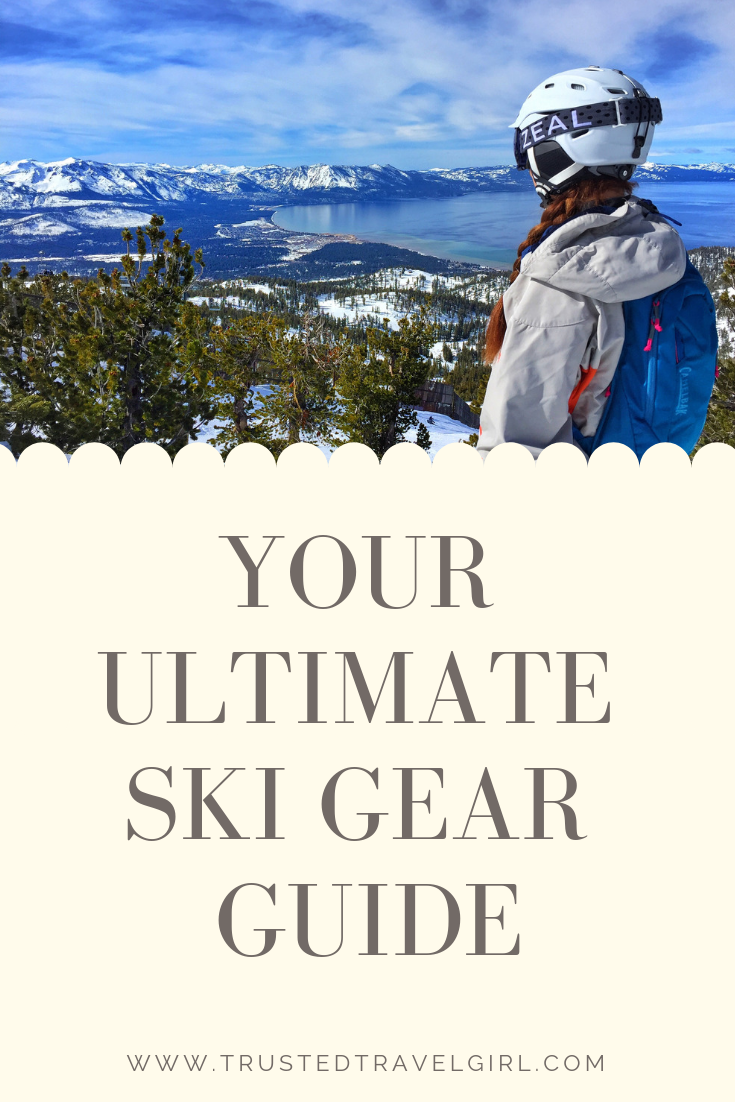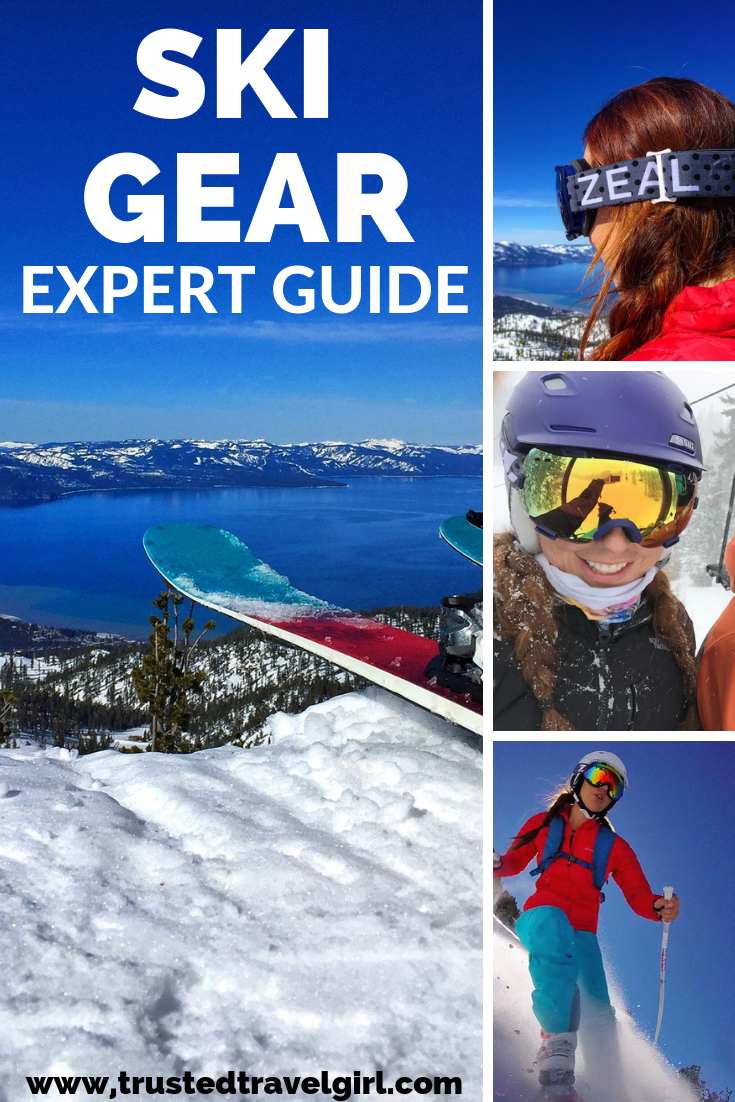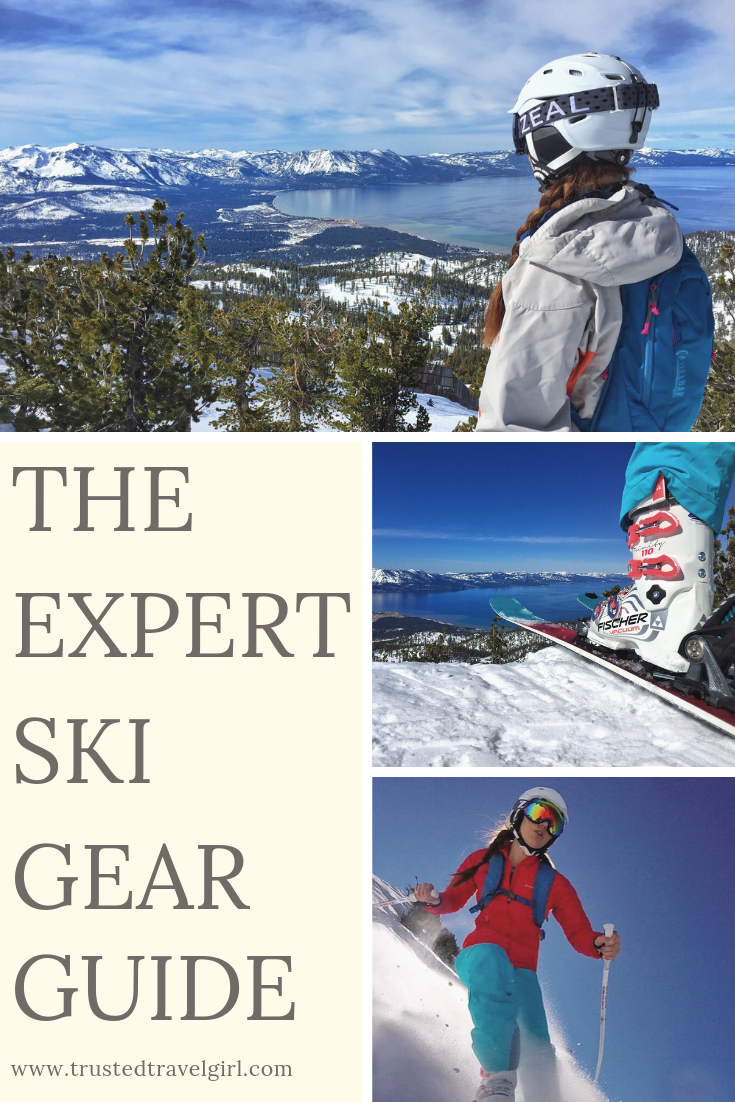Expert Packing Guide for Your Next Ski Trip
Skiing is an expensive sport and going on a ski trip is a generally a costly investment in a vacation. Therefore, you want to be sure that you are well prepared. Lift tickets certainly aren’t cheap and neither are condos or hotels near the mountain. Ski gear is also fairly expensive, so it’s crucial to be sure you’ve got the right gear. Skiing can be exhausting, cold and miserable if you aren’t properly prepared.
Since I have been skiing since I could walk, I have packing for a ski trip down to a science. Below is a list I have compiled of some must-have items to secure an amazing trip. Although some of these items may be no-brainers for expert skiers, for the novice skier many of these items can easily be overlooked. Even if you have been skiing for years, there may still be a tip or two in here that you could use.
I have listed the below items in order of importance.
Custom Ski Boots (from Fischer)
The boots that you are in are far more important then your skis. Let me guess, you are thinking “It’s called ‘skiing’, not ‘booting’, how could boots possibly be more important then skis?”. Allow me to explain. At the end of the day, skis are skis and unless you are an advanced skier, chances are you won’t know the difference if your ski has both a rocker, a camber both or neither. You will, however, notice if you are in pain from your ski boots; bad boots can ruin an entire trip, even for the most advanced skiers. It doesn’t matter how great of a skier you are, if your boots don’t fit properly then you aren’t able to activate and control your ski properly. This can lead to poor form on the mountain as well as injuries like torn ACL’s. Poor fitting boots will also lead to cold feet, which can be miserable. Ski trips aren’t cheap, so invest wisely and get a custom fitted boot. Boots aren’t cheap, and a custom fit boot does cost a little bit more, but it is well worth the investment, even if you only go on one ski trip a year.
My custom boots are the Fischer Vacuum boot. They run between $500 and $1000 per pair, but are well worth it. The process is pretty incredible, the shell of the boot is heated to almost 200 degrees and becomes so flexible that it flops around, you then put the boot on and have the shell vacuum fit to your foot. I went to the experts at California Ski Company in Berkeley, CA. They fit more Fischer vacuum boots then anyone else in the world, and I can’t recommend them enough. The fitting process was really fun and the boots come with a fit guarantee, so if for any reason within the next year you are unhappy with the boots the fit experts will make any adjustments necessary completely free of charge. I love a company that can stand behind their products and the work that they do!
Helmet
Wear a helmet! Almost everyone on the mountain wears a helmet these days, and the people that don’t just look like an accident waiting to happen. A helmet does not make you look lame. I don’t care how great of a skier/snowboarder you are, you are only as safe as the person next to you on the mountain and when they lose control and crash into you, you’ll wish you were wearing that helmet. Additionally, they are comfortable, they don’t fall off like hats, they keep expensive goggles secured so they aren't lost and they keep your head warm. Most helmets even have a place for headphones to be put in. It’s a no brainer, keep your head safe.
Goggles (Zeal)
You need goggles when you ski to protect your eye’s from the elements and to help you see when it’s extremely sunny. For goggles, my favorite company is Zeal. They never fog up on me. The peripheral vision in these goggles are incredible, and you will look like an all around badass in these. Even if you don’t ski well, you can still look like you do.
Camelbak
You wouldn’t go to the gym for an hour without water, so why would you ski all day without it? Having water while skiing is completely necessary, and carrying a Camelbak is the absolute best way to do that. The one caveat is that you absolutely have to empty and dry them out or they could get moldy.
Chapstick
Cold dry air will chap your lips fast. I always keep chapstick readily available in a pocket of my ski jacket. Just separate the things you are accessing (chapstick, snacks, camera) from things that you don’t need falling out of your pocket on the lift, like credit cards, cash and keys.
Layers
When skiing, it’s all about the layers. Hot Chillys, Marmot, Snow Angel and Columbia are some of my favorite base layers. The point of a base layer is to draw out any perspiration away from the body so that you don’t get sweaty and eventually cold. If you don’t dress appropriately you will be cold and miserable.
Extra Mittens/Gloves
Bring an extra pair of gloves! They can get soaked from days when it’s dumping hard or if you sweat in them at the beginning of the day. I always have cold hands, so I look for top quality when choosing a pair of gloves. My favorite brands are Swany and Hestra, they are both top quality, and will last a long time.
Boot Dryer Sticks
Just how poorly fitting boots can ruin a ski trip, wet boots can be pretty miserable as well. You will need boot dryer sticks, they will not only dry your boots overnight, but they will warm them up on a chilly morning before you slide them on. They are inexpensive and extremely portable.
Hotronics
I live in Los Angeles, where the sun always shines and I’m almost never cold. The last thing I will put up with is being cold, so I come prepared. Hotronics are an amazing invention. They are battery operated foot warmers that are professionally installed into your ski boots. You simply flip a switch on the back of your boot and your toes will be warm all day.
Snacks
Pack snacks! When skiing all day you are bound to get hungry. Long days on the mountain burn a ton of calories and you will need to fuel up. I prefer to wait as long as humanly possible to go into the lodge for anything because when the skiing is good, you want to stay out on the snow, especially while everyone else is busy in the lodge. Chairlifts are a perfect place to pull out a pocket-sized snack. My favorites are granola bars and fruit snacks, however one of my longtime ski buddies swears by having a bar of chocolate for the chairlift.
Sunscreen
Sunscreen. You read that correctly. Unless you want a goggle tan, you may want to bring sunscreen if it’s sunny and you are at a high altitude. Especially for any spring skiing conditions.
Neck Warmers
You’ve got your ski pants, and coat, but do you have a neck warmer? You 100% do not want to head out the door without one. My favorite brand is Turtle Fur, they make a really long thin one, so when it’s an extremely cold day you can pull it up high over your face, and even your head incase your helmet is lacking vents that close.
The Right Socks
The rule with socks is the more the merrier. A thin, ski specific wool sock is key. Always bring a second pair for the day to keep in your day bag incase they happen to get soaked before lunch. My favorite brand is Sockwell. They just came out with a brand new compression ski sock that I love. Additionally, they were created by Jim Markley, one of the guys that helped build the company Smartwool, before it was sold to Timberland. The marino wool absorbs moisture instead of wicking it away, keeping feet warmer and dryer, and the compression keeps legs from tiring or swelling.
Another secret is to wear a different pair of regular socks on the way to the mountain. Going between the cold outdoors and heated indoors while loading up your car and driving to the mountain can cause feet to sweat a little bit, and damp socks will get cold in your ski boots, fast!
Ski Lock
Sadly, not everyone on this planet is trustworthy so keeping a ski lock in your pocket is always adviasble. Additionally for an additional charge some resorts have a ski check (Such as Mt Hood Meadows). However, I always like to be sure that my gear is safe so I ski with a small ski lock in my pack or pocket.
Pro tip: If you forget this one, you can always separate your skis. You simply put one ski and pole on one rack and walk the other ski and pole to another ski rack area. This makes it more difficult for a thief to find both skis, and more difficult to steal a pair.
Velcro Ski Strap
You can purchase one of these at most ski shops. This simple strap will help you hold your skis together so they aren’t separating on you during transit.
Altitude Sickness Medicine
Are you heading to high elevations? If you are, I advise that you talk to your doctor about a perception for Diamox. I take 250mg 2x a day beginning 24 hours before arrival. I gradually work my way myself to 1/2 that dose. It helps you get acclimated, and prevents vicious altitude sickness.
GoPro
Even if you aren’t a pro skier jumping and doing tricks, it’s nice to have some footage from your trip. Additionally, if you drop your phone in the snow, it will get wet and might not work. It’s best to take out a GoPro session or a Hero with the waterproof housing and then you don't have to worry about it.
Bonus: The fisheye lens on the GoPro will help you capture more of your surroundings then a traditional phone camera.
Ski vacations are a whole lot of fun, but can be hell if the proper gear isn't packed. Print out this list of tips above and you will be sure to be as prepared as the pros!








